
Especially popular in Tokyo, shoyu ramen is a global staple in the ramen world. Shoyu ramen is known for its dark broth and umami flavor. Whether you are a seasoned ramen connoisseur or you are new to the world of ramen, shoyu ramen will not disappoint.
While it may seem a little intimidating when you first dive into preparing ramen yourself, once you start you will find it’s a lot of fun and definitely worth the effort.
In this article we will walk you through the components of this savory ramen dish and show you how to prepare an authentic bowl of shoyu ramen from your home step-by-step.

Table of Contents
What is Shoyu Ramen?
First introduced to Japan by the Chinese a little over one hundred years ago, ramen today has evolved into a staple of Japanese cuisine. Today, you can find restaurants specializing in and serving Japanese-style ramen around the world.
The ramen of today is a far cry from the simple noodle dish of one hundred years ago. While it is still considered a quick and inexpensive meal, much appreciation and effort has gone into the complexities of the various ramen sauces (tares) and broths. In fact, there are two Michelin rated ramen restaurants in Tokyo.
There are four main types of ramen that you are likely to find in most ramen shops across Japan and around the world. These are shio ramen, shoyu ramen, miso ramen, and tonkotsu ramen. What differentiates the different styles of ramen is largely the type of broth used and the tare (or sauce) used to flavor the ramen.
“Shoyu” literally translates to soy sauce. As such, soy sauce is a main component of the tare added to the broth, bringing a strong umami flavor and dark color.
Where is Shoyu Ramen Popular?

Shoyu ramen was first developed in Tokyo and there it remains the most popular. However, shoyu ramen can be found in ramen shops across Japan and around the world.
Components of Shoyu Ramen
While often thought of as a simple noodle soup, ramen consists of five components. Each component is prepared separately and then individually added to each bowl. These components of ramen are the broth, fat or oil, tare (or sauce that provides the defining flavor of the ramen), noodles, and toppings. Understanding the unique flavors each component brings to the ramen is essential to understanding how to build your own ramen dish. Below we will discuss each of the five components that make up shoyu ramen.
Broth
Shoyu ramen typically uses a broth composed of chicken stock and dashi, a common Japanese fish stock. Homemade chicken stock and dashi do provide a superior product than their store-bought counterparts. However, chicken stock in particular can be a very time consuming process to make. I typically use store-bought chicken stock or frozen homemade chicken stock if I have any.
However, I do try to make the dashi broth from scratch, provided I have the ingredients, as it’s much less time consuming to make and the end product is worth the extra effort. However, I do always keep packets of instant dashi on hand just in case I don’t have the ingredients to make it from scratch.
Check out the following for a quick and easy dashi recipe and video: How to Make Authentic Japanese Dashi
I usually use about 1 1/4 cups of broth for each bowl of ramen. However, this amount can vary depending on the size of the bowl.
Tare
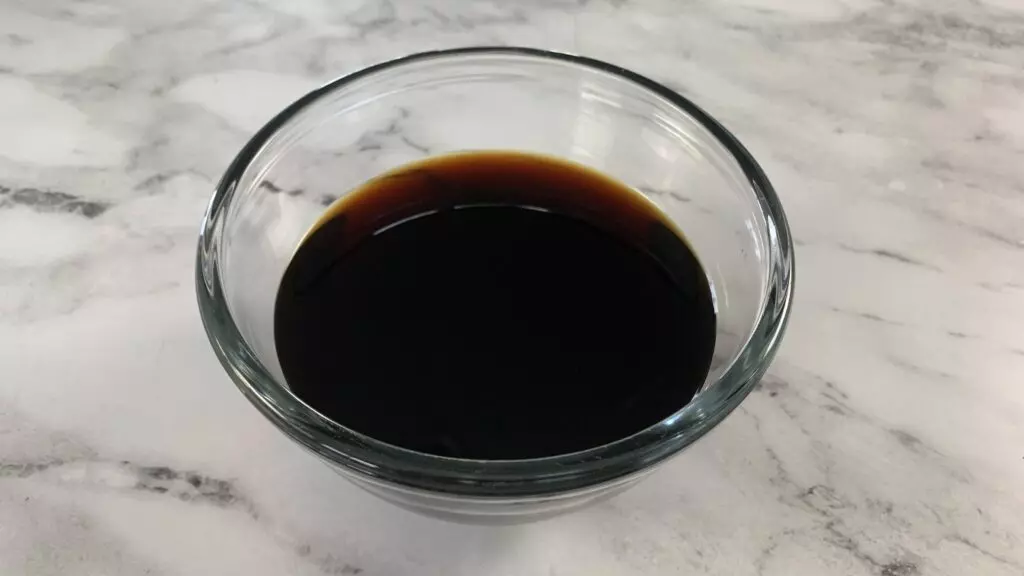
The tare, or sauce, adds the defining flavor in ramen. Soy sauce is the main flavor component that gives shoyu tare its tangy, umami flavor. It also contains dashi, sake, mirin, sugar, and shittake mushrooms.
Typically, I use about two tablespoons of shoyu tare to make shoyu ramen. Though as with any recipe, you can adjust as needed to achieve the flavor you are looking for and make it your own.
Aromatic oil/fat
Oil, or fat, is another essential component to all ramen dishes. While several recipes combine the oil into the tare, I like to keep the two components separate to assure each bowl of ramen gets the correct and consistent proportions of tare and oil.
In shoyu ramen I use vegetable and sesame oil as the base. I then cook grated ginger and minced garlic in the oils to infuse their flavor throughout the oil. After about one to two minutes of cooking the garlic and ginger into the oil, I strain the oil into a small bowl.
When assembling the ramen, I add one tablespoon of this ginger and garlic infused oil into the broth and tare mixture before adding the noodles.
Noodles
Shoyu ramen often uses the wavy, springy style of noodles but any type of ramen noodles will do. If you are in a pinch, you could even use the noodles out of the instant ramen packs. Of course, this will not be as good as if you made your own noodles or bought them fresh, but it gets the job done.
It’s important that you strain your noodles very well before you add to your broth as excess water can dilute your broth and change the overall flavor of your ramen.
Toppings
When I make shoyu ramen, I always add the following toppings that I think are fairly essential to each bowl: a slice of chashu pork, two halves of a ramen egg, and a slice of kamaboko (or fish cake). I also usually add a pinch of diced scallions, and a couple strips of nori.
However, the toppings often vary from one ramen chef to another.
Check out the following article for a great chashu pork recipe and video: Authentic Chashu Pork: Step-by-Step Instructions
How to Make Shoyu Ramen
Prepare broth
1. Combine 4 cups of dashi and 3 cups of chicken stock and into a pot, stir and bring to a simmer.

Prepare shoyu tare
1. Combine 1 cup of dashi, 1 cup of soy sauce, 1/2 cup of mirin, 1/2 cup of sake, 2 Tbsp. of sugar and 2 dried shiitake mushrooms into a sauce pan and slowly bring to a simmer over low-medium heat.
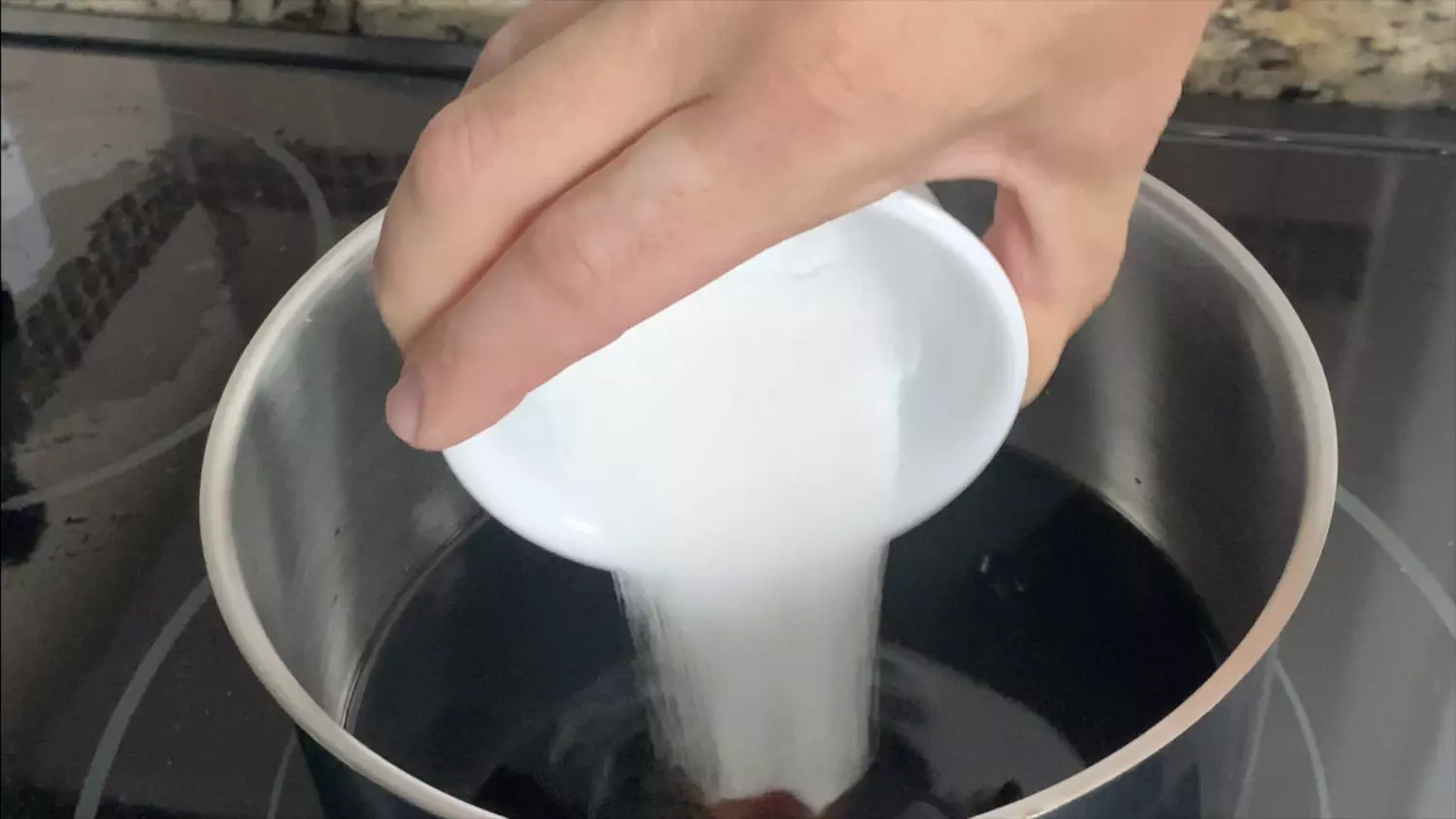
2. While waiting for the mixture to simmer, stir to make sure sugar is dissolved in the mixture. Also, stir the mix occasionally after the sugar is dissolved.
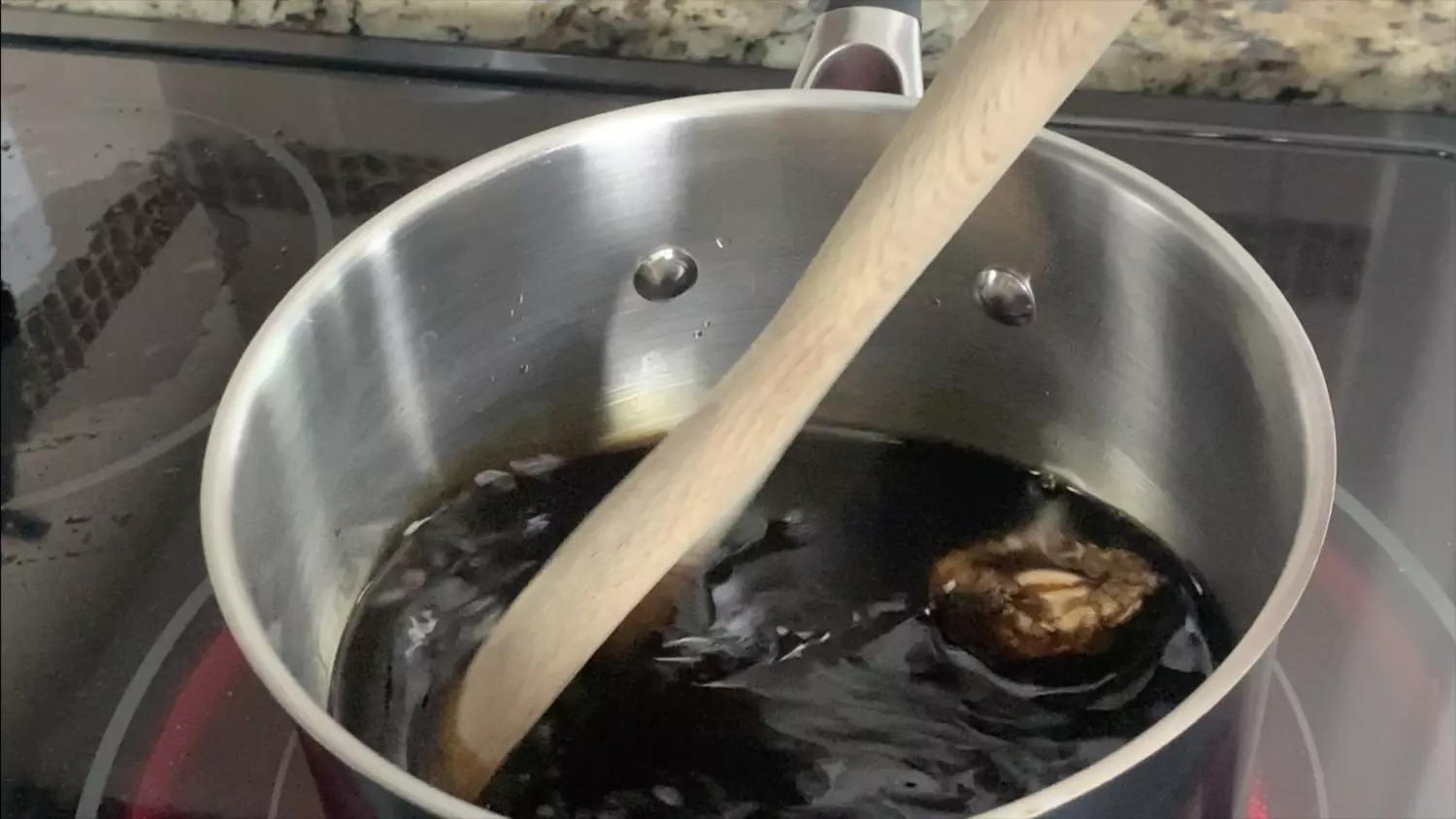
3. Once simmering, remove the shitake mushrooms and allow the remaining mixture to simmer for an additional five minutes.

4. After 5 minutes remove from heat.
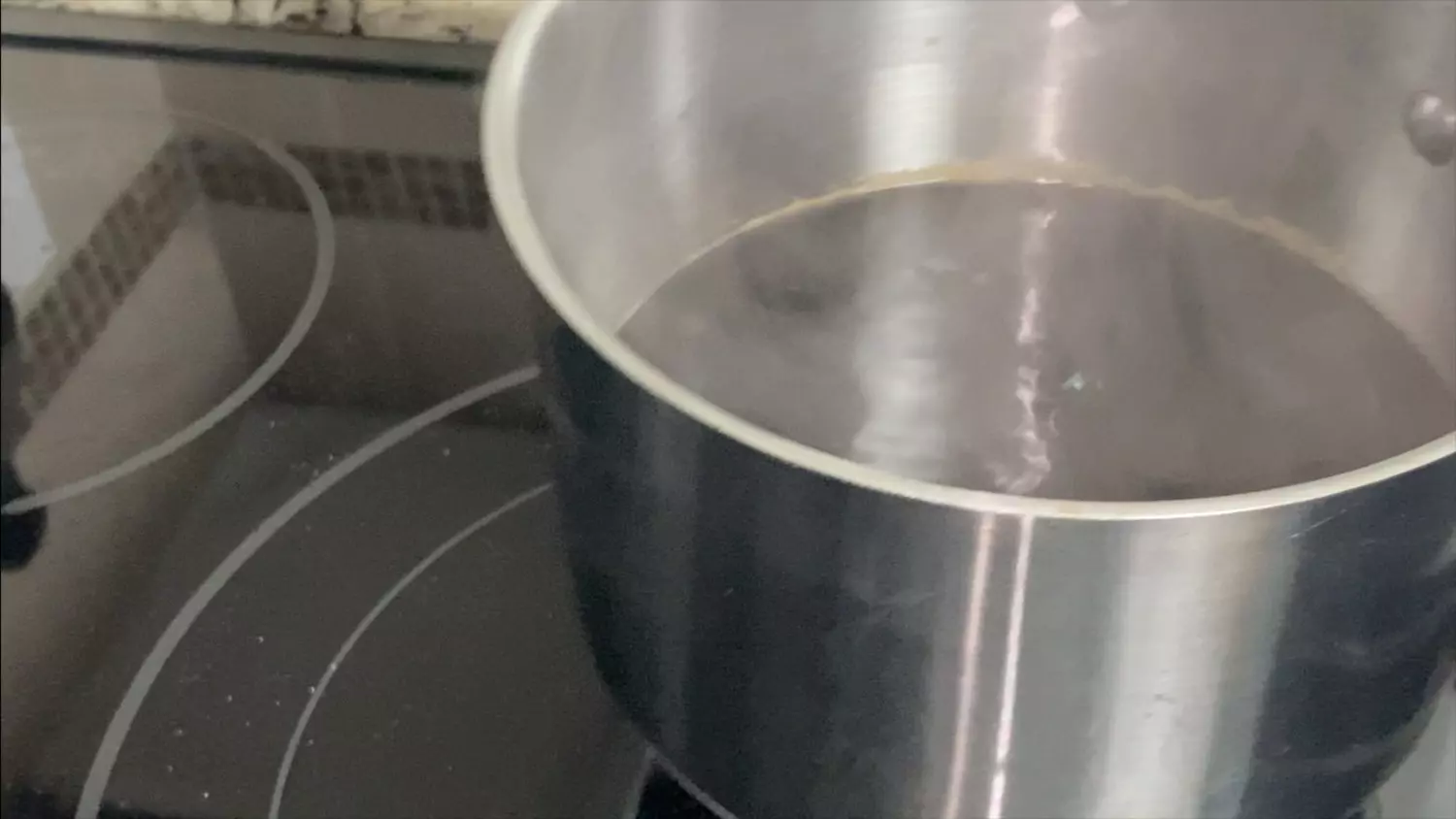
Prepare aromatic oil
1. In a small sauce pan, heat vegetable oil and sesame oil on medium-low heat until hot.
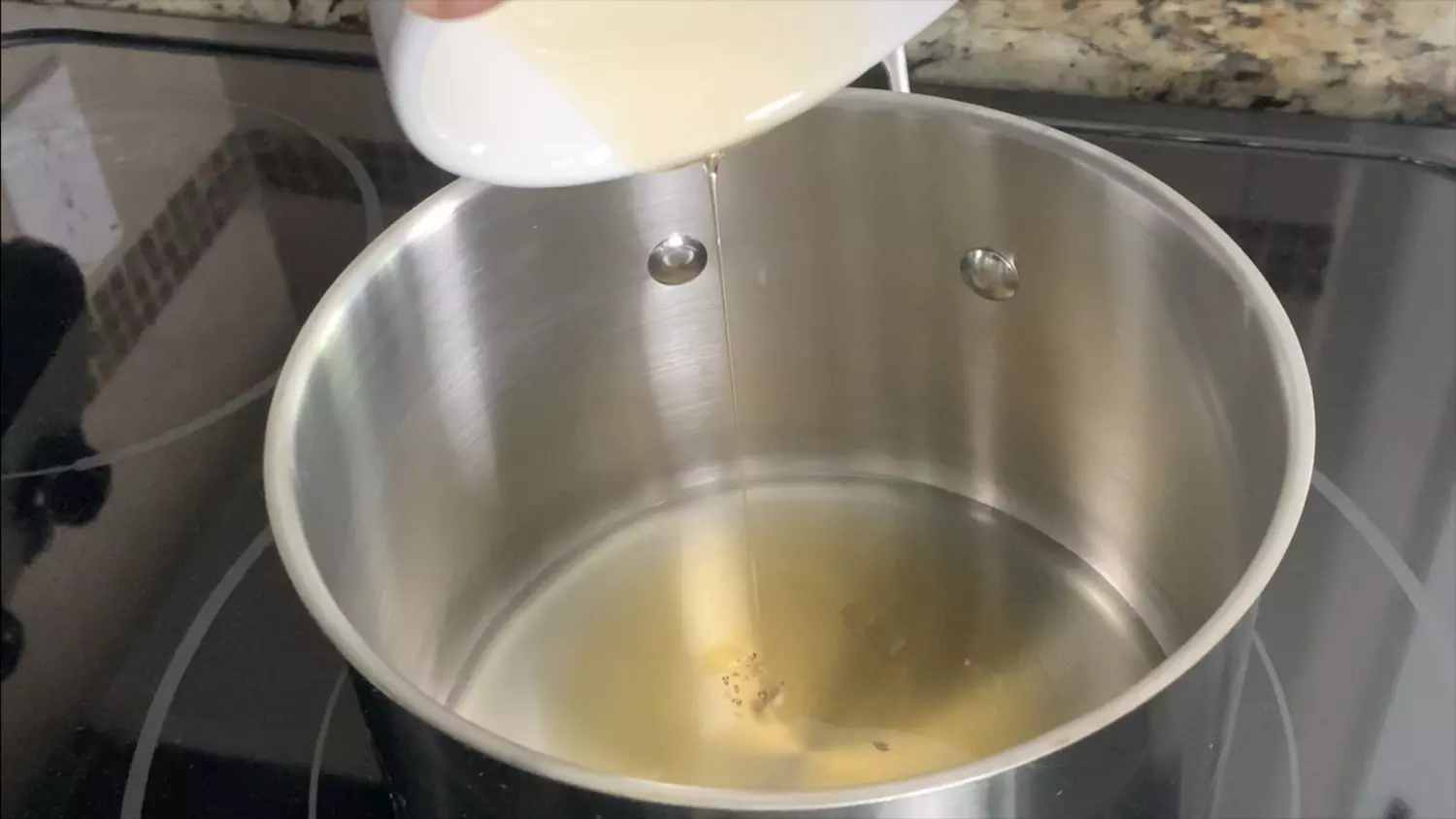
2. Add minced garlic and grated ginger to oils and cook for 1-2 minutes or until browned and releasing aromas. Make sure not to let the aromatics burn.
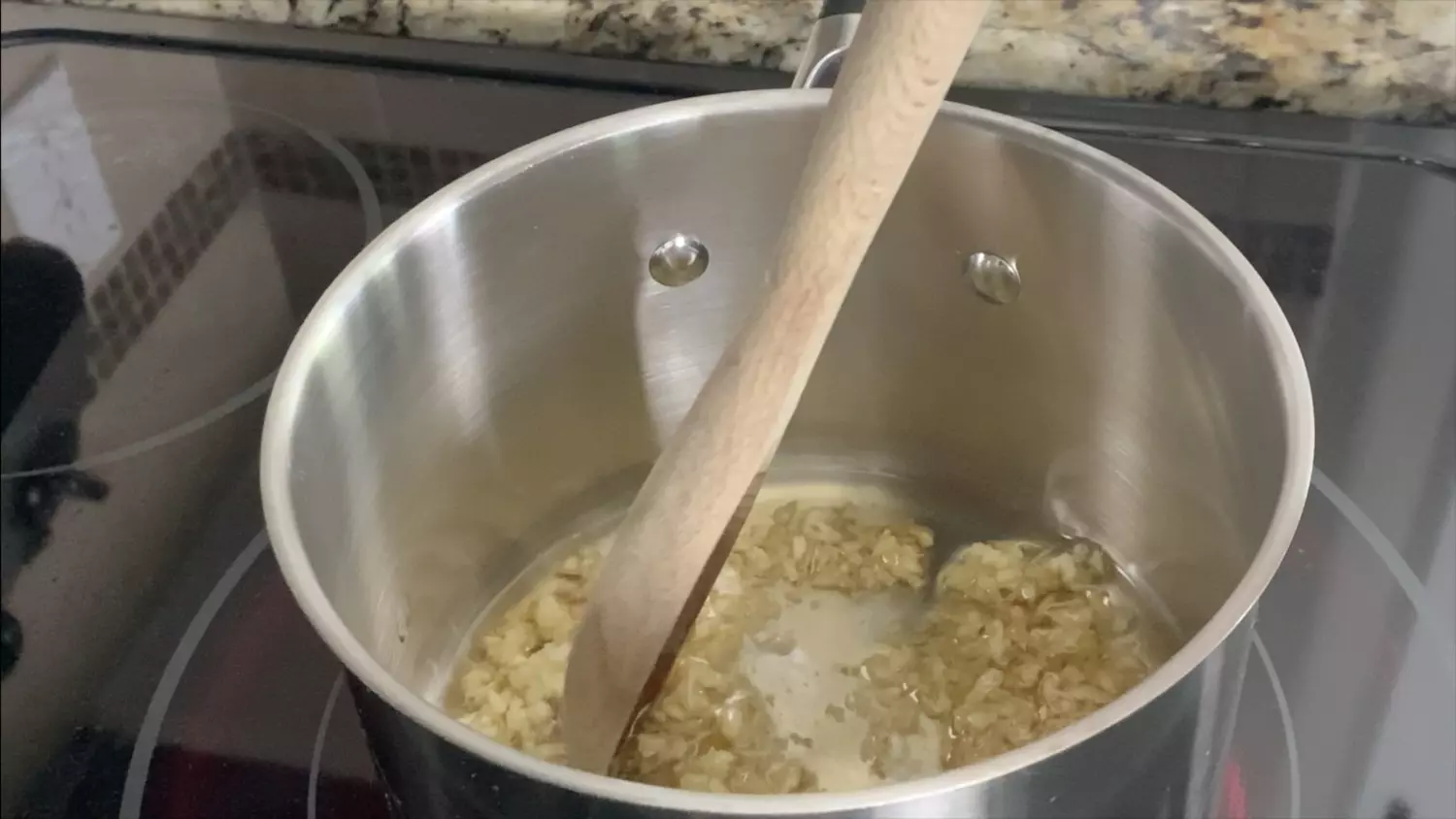
3. Remove from heat and let cool.
4. Once cool, strain oil into small bowl
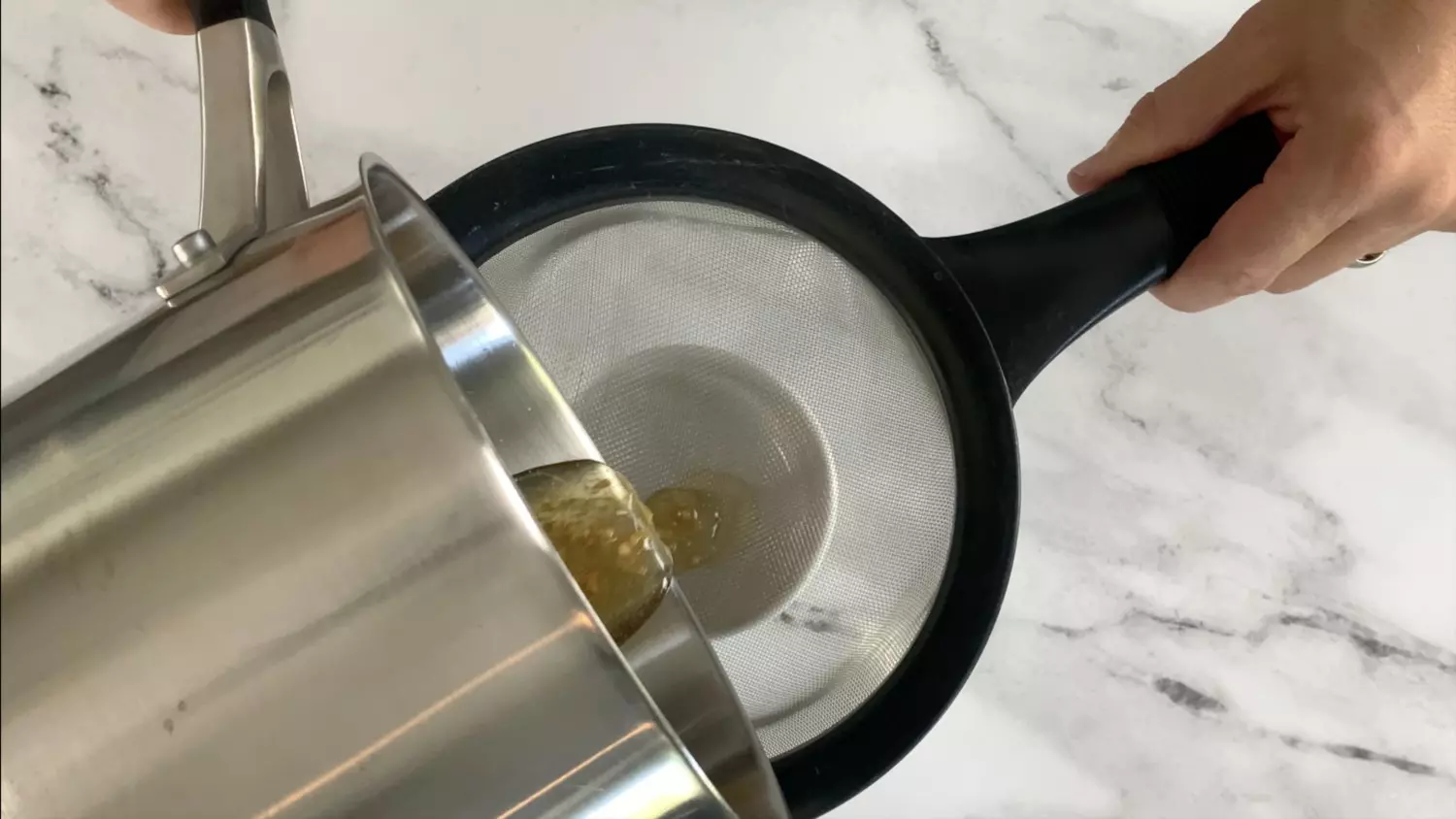
Prepare the toppings
1. Cut four slices about 1/4 inch thick off of the chashu pork. Heat each slice of chashu by heating in a skillet with the chashu cooking liquids.
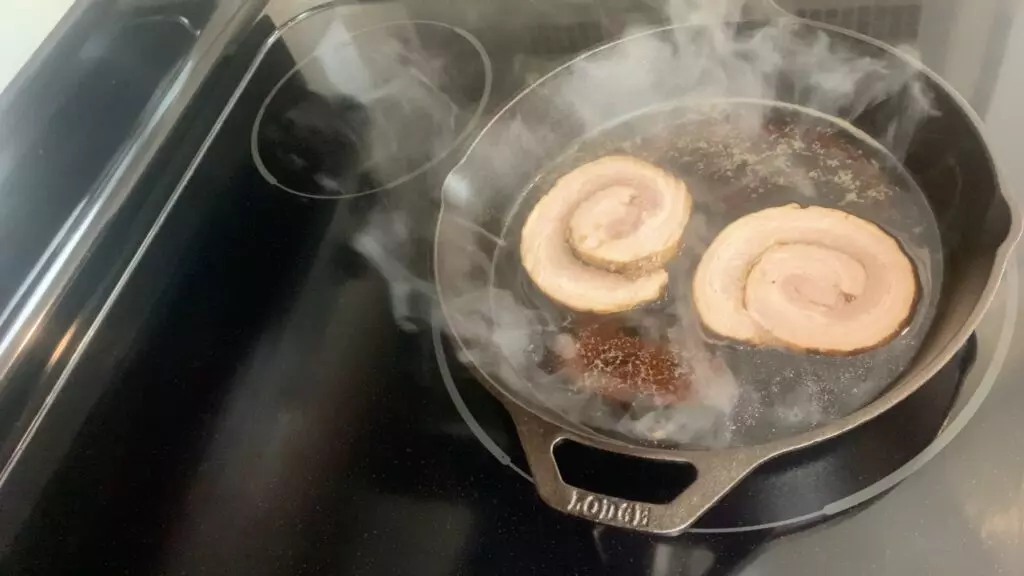
2. Assemble remaining topping ingredients so they can be added to the soup quickly.
3. Cut ramen eggs in half. Also, cut the nori sheet into strips.
Cook noodles and assemble soup
1. Follow the instructions on the noodles to cook noodles in boiling water.
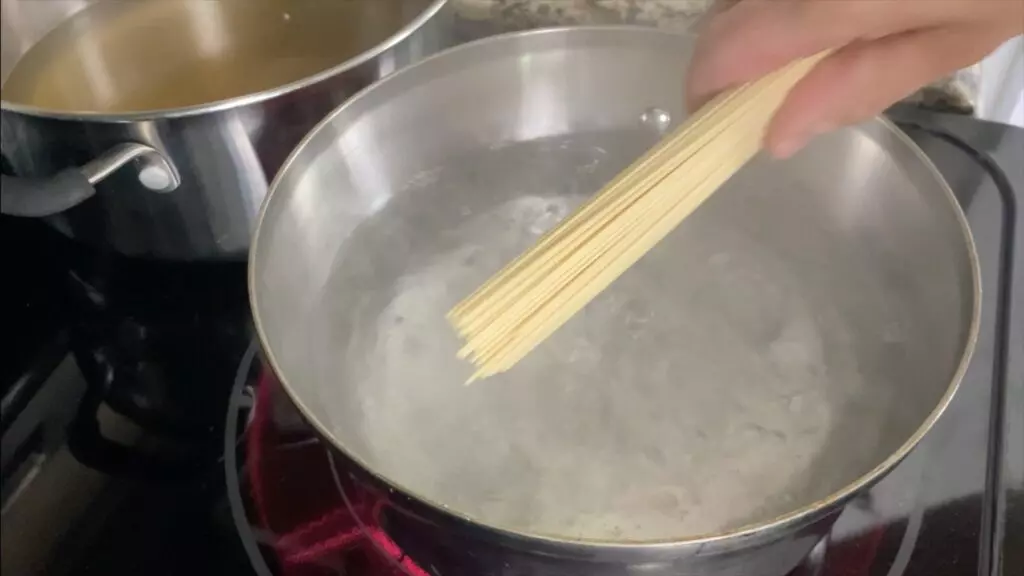
2. While the noodles are cooking, place 1 1/4 cups of the broth into a bowl. Add 2 tablespoons of the shoyu tare and 1 tablespoon of the aromatic oil. If necessary, stir in tare as needed to make sure it’s combined with the broth.
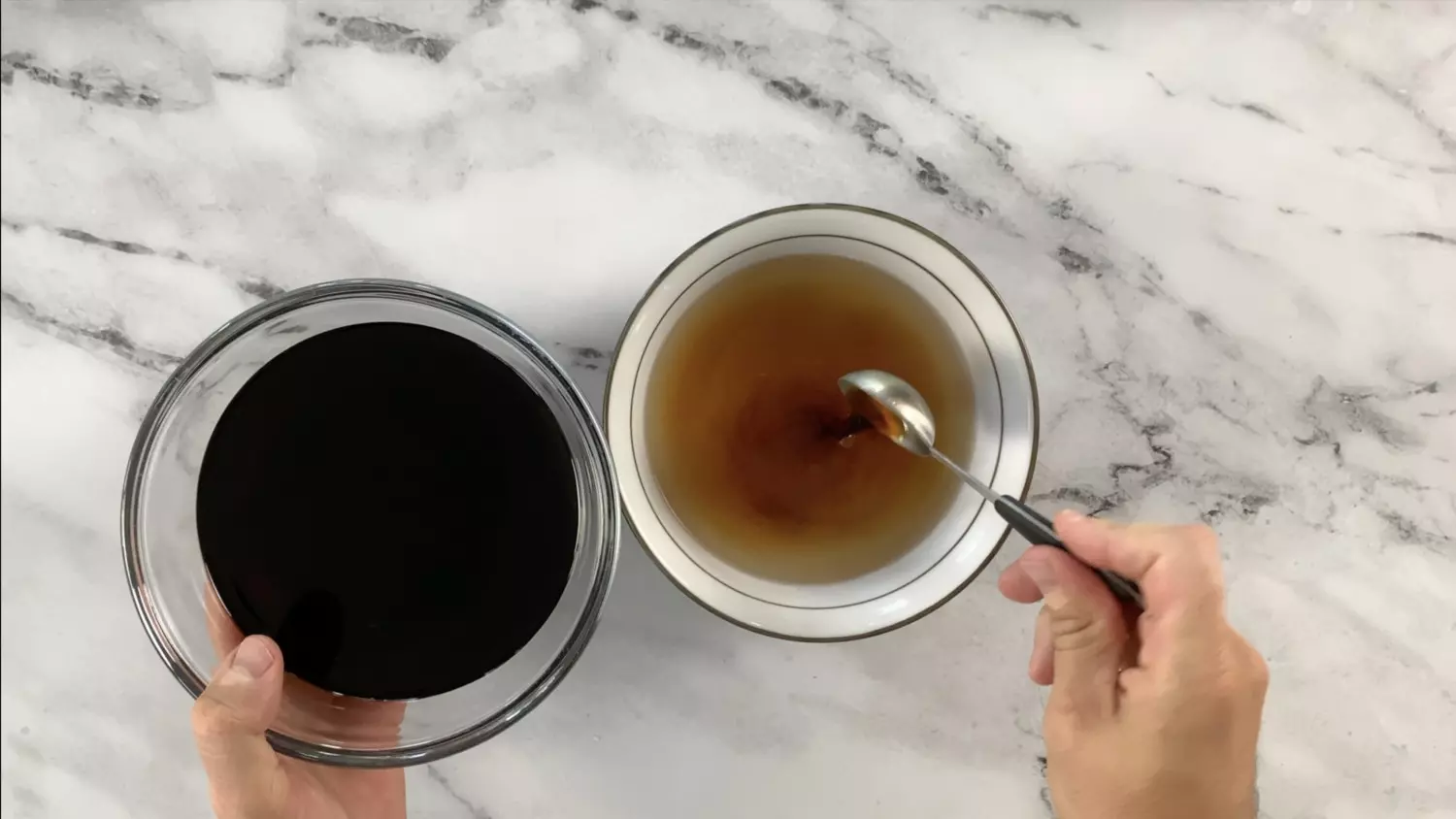
3. Once noodles are done cooking, strain thoroughly making sure to get rid of as much water from the noodles as possible as excess water can dilute the broth. Once strained, add an individual portion of noodles to the bowl with the broth.
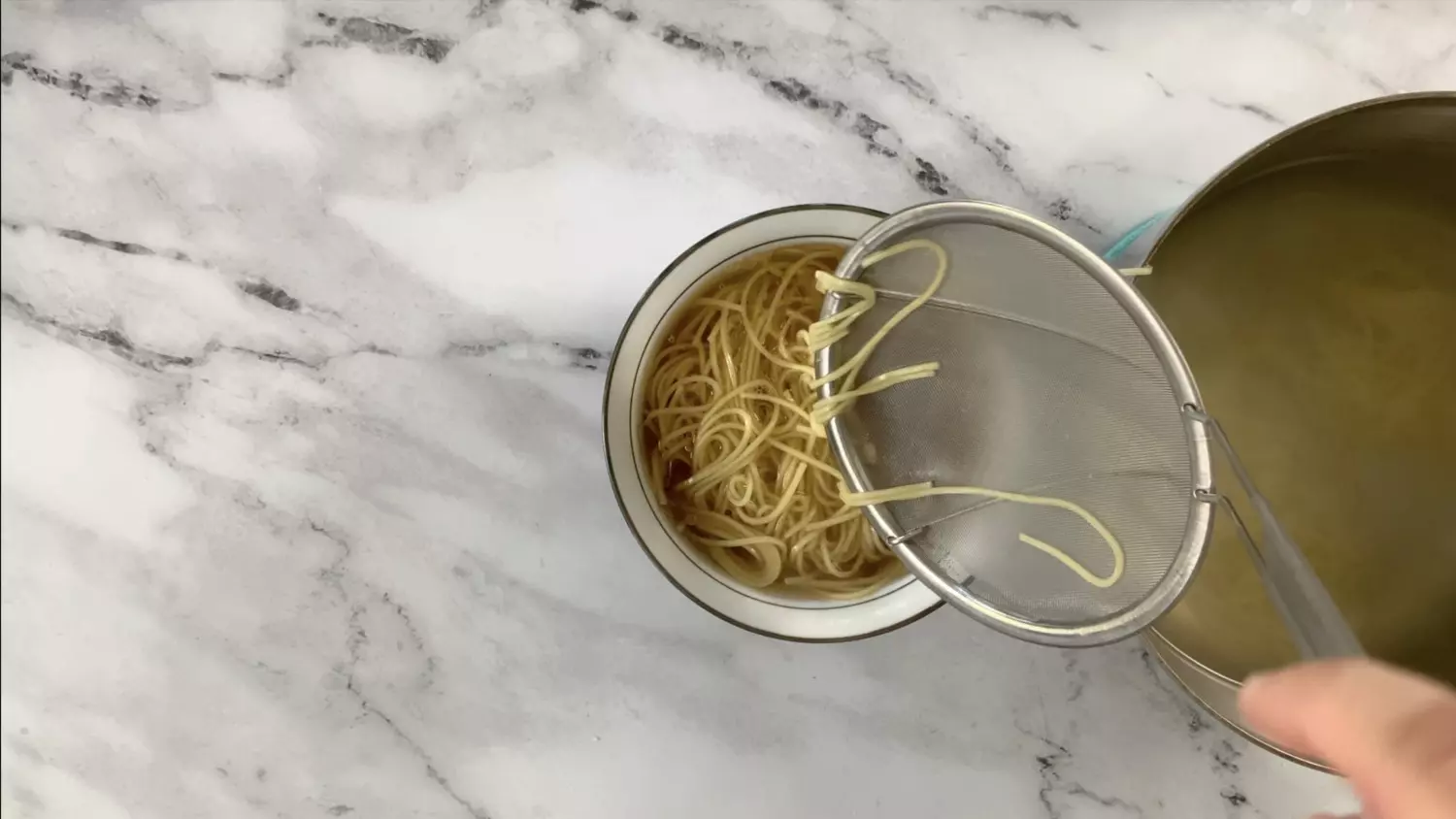
4. Add a chashu slice to the bowl of ramen.
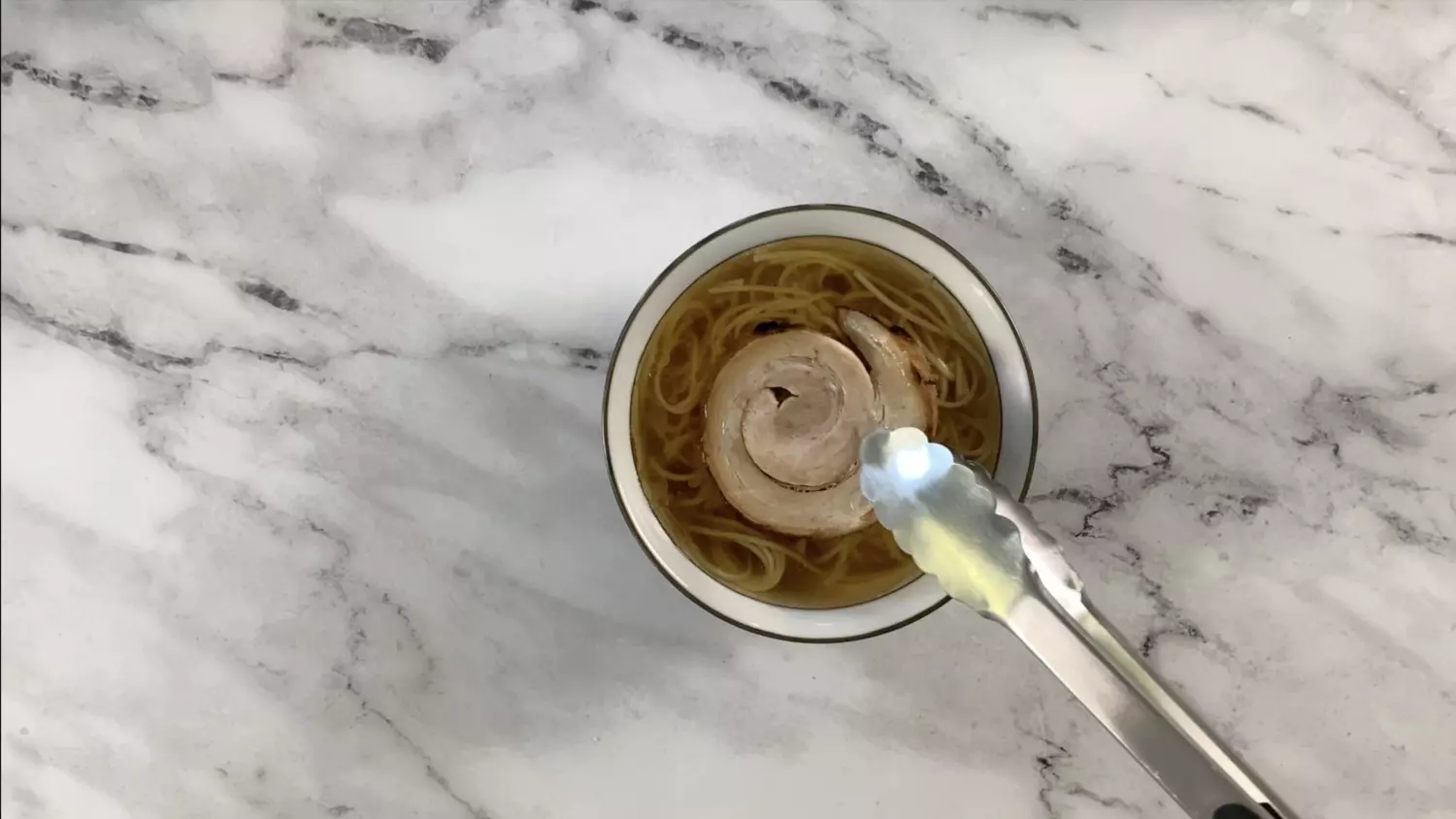
5. Place each half of the ramen egg in the broth with the yolk facing up.
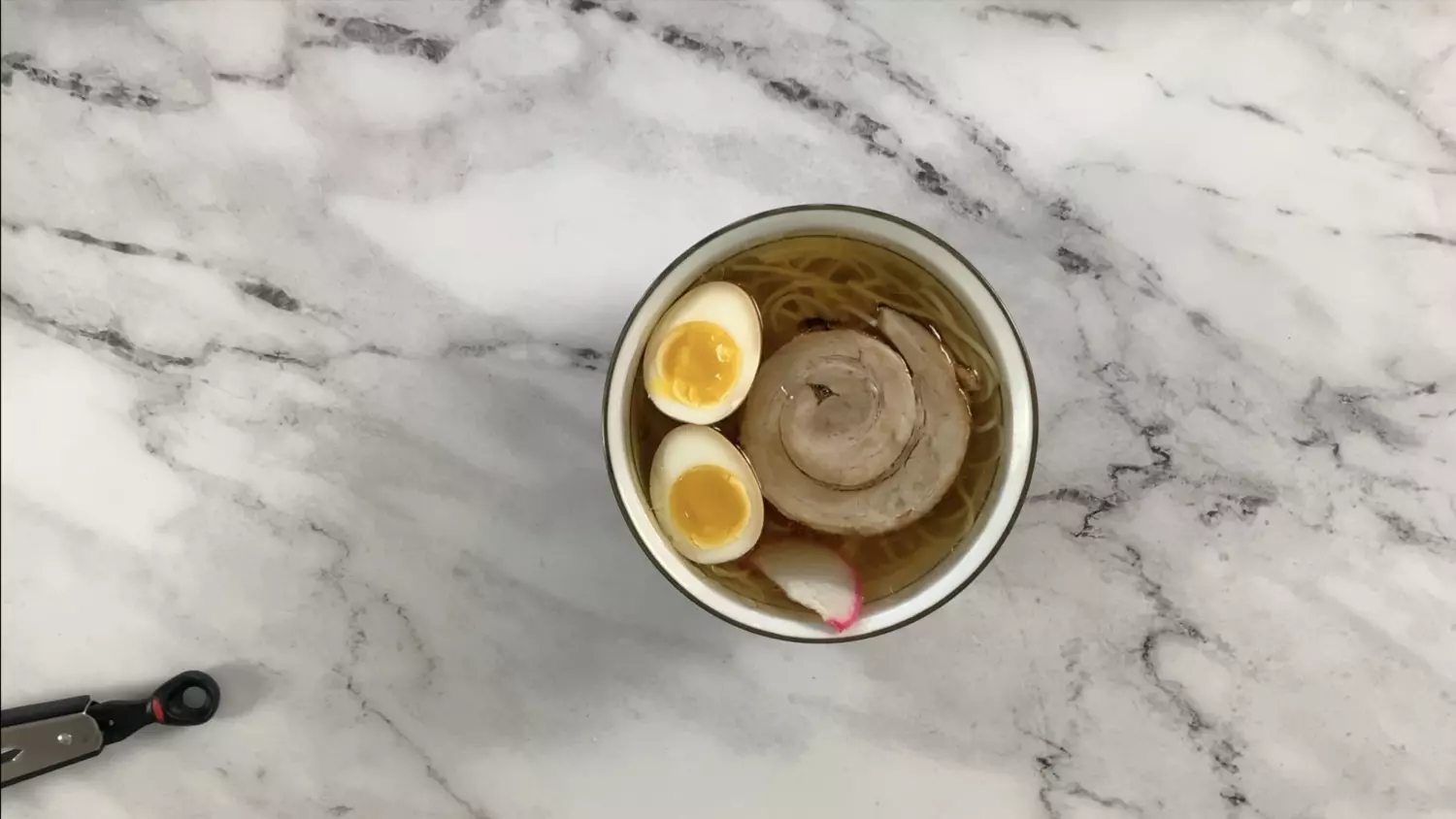
6. Also, add a slice of kamaboko (most commonly used type of kamaboko in ramen is narutomaki), and 1/4 of the scallions to the bowl. Fold your nori strip in half and add to the bowl.
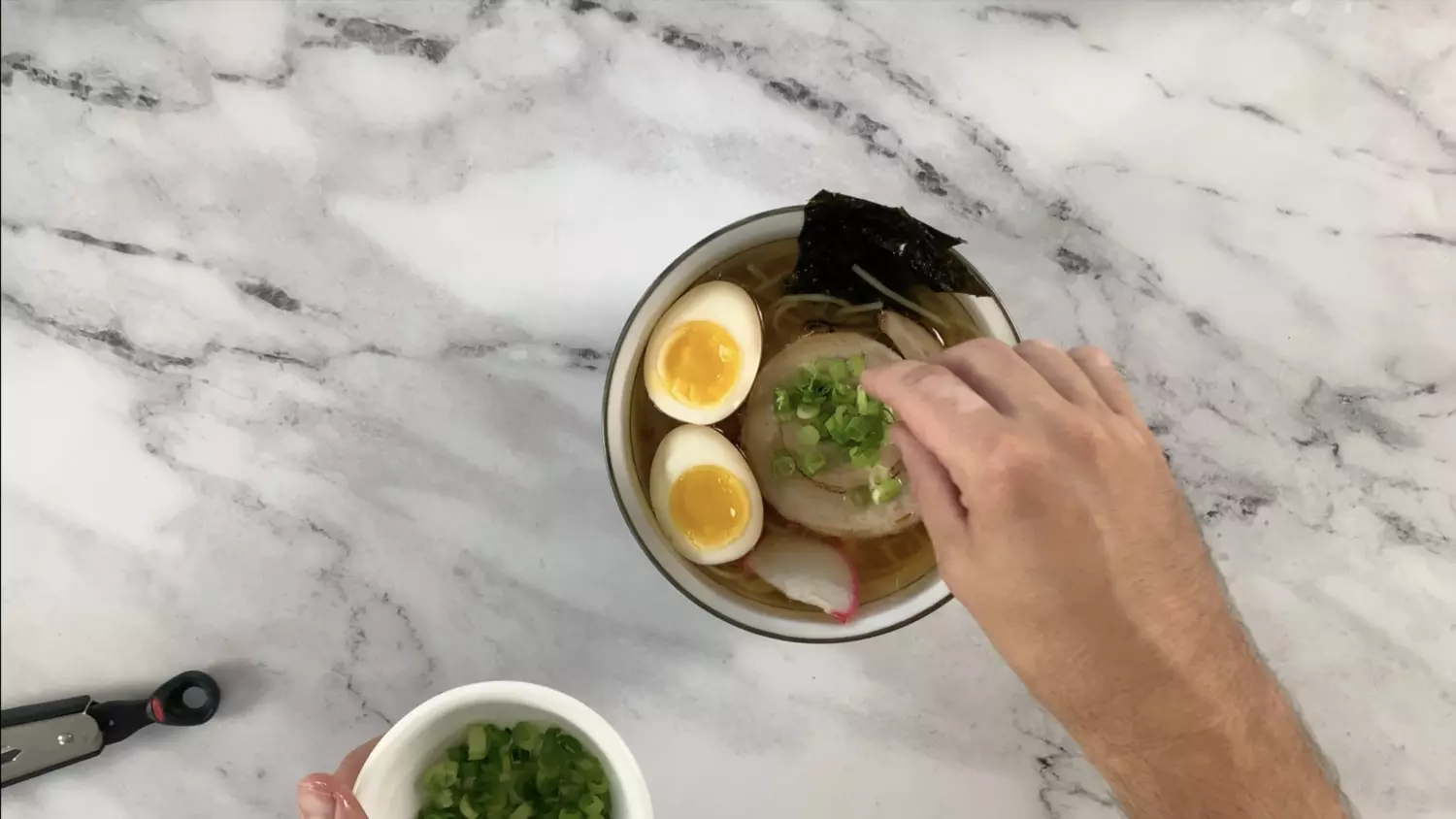
7. Serve and enjoy!
Shoyu Ramen Recipe
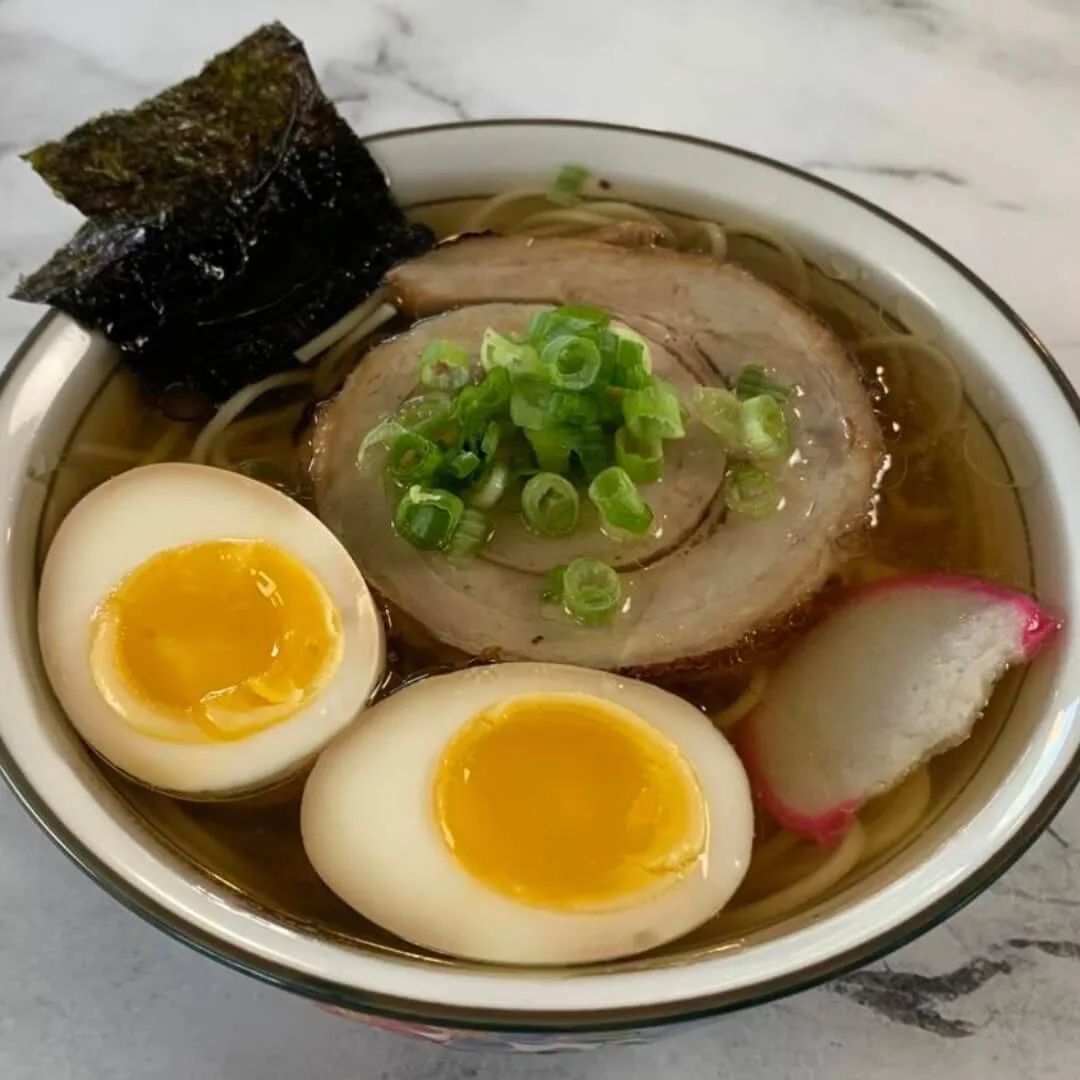
Shoyu Ramen Recipe
Equipment
- 1 Pot for broth
- 1 Sauce pot
- 1 Skillet
Ingredients
Broth
- 3 cups Chicken stock
- 5 cups Dashi
Shoyu Tare
- 1 cup Soy sauce
- 1/2 cup Mirin
- 1/2 cup Sake
- 2 Tbsp. Sugar
- 2 Dried shiitake mushrooms
Aromatic oil
- 2 Tbsp. Ginger freshly grated
- 6 cloves Garlic minced
- 2 Tbsp. Sesame oil
- 1/4 cup Vegetable oil
Noodles, tare and toppings
- 4 Servings Ramen noodles 90 grams dry noodles
- 4 slices Chashu pork
- 4 slices Kamaboko
- 4 Ramen eggs (Ajitsuke tamago)
- 1 Nori sheet cut into 8 even pieces
- 2 Scallions diced
Instructions
Prepare broth
- Combine 4 cups of dashi and chicken stock into a pot, stir and bring to a simmer.
Prepare shoyu tare
- Combine 1 cup of dashi, 1 cup of soy sauce, 1/2 cup of mirin, 1/2 cup of sake, 2 Tbsp. of sugar and 2 dried shiitake mushrooms in a sauce pan and slowly bring to a simmer over low-medium heat.
- While waiting for the mixture to simmer, stir to make sure sugar is dissolved in the mixture. Also, stir the mix occasionally after the sugar is dissolved.
- Once simmering, remove the shitake mushrooms and allow the remaining mixture to simmer for an additional five minutes.
- After 5 minutes remove from heat.
Prepare aromatic oil
- In a small sauce pan, heat vegetable oil and sesame oil on medium-low heat until hot.
- Add minced garlic and grated ginger to oils and cook for 1-2 minutes or until browned and releasing aromas. Make sure not to let the aromatics burn.
- Remove from heat and let cool.
- Once cool, strain oil into small bowl
Prepare the toppings
- Cut four slices about 1/4 inch thick off of the chashu pork. Heat each slice of chashu by heating in a skillet with the cooking liquids from the chashu pork.
- Assemble remaining topping ingredients so they can be added to the soup quickly.
- Cut ramen eggs in half. Also, cut the nori sheet into strips.
Cook noodles and assemble soup
- Follow the instructions on the noodles to cook noodles in boiling water.
- While the noodles are cooking, place 1 1/4 cups of the broth into a bowl. Add 2 tablespoons of the shoyu tare and 1 tablespoon of the aromatic oil. If necessary, stir in tare as needed to make sure it's combined with the broth.
- Once noodles are done cooking, strain thoroughly making sure to get rid of as much water from the noodles as possible as excess water can dilute the broth. Once strained, add an individual portion of noodles to the bowl with the broth.
- Add a chashu slice to the bowl of ramen.
- Place each half of the ramen egg in the broth with the yolk facing up.
- Also, add a slice of kamaboko (most commonly used type of kamaboko in ramen is narutomaki), and 1/4 of the scallions to the bowl. Fold your nori strip in half and add to the bowl.
- Serve and enjoy!
Video
Nutrition
Frequently Asked Questions
Is shoyu ramen healthy?
Shoyu, like most other types of ramen, is not an overly healthy dish as it has a high concentration of salt. The noodles also make it fairly high in calories.
Is shoyu ramen gluten-free?
Typically shoyu ramen is not a gluten-free dish as it contains several ingredients that are not gluten-free. However, if you prepare shoyu ramen yourself using gluten-free soy sauce and gluten-free noodles, you will be able to enjoy it with those sensitive to gluten.
Where did shoyu ramen originate?
Shoyu ramen originated in Tokyo in the early 1900’s and remains most popular in Tokyo today.
Final Thoughts on Shoyu Ramen
What started as a simple, inexpensive meal on the streets of Tokyo has evolved into a flavorful dish enjoyed around the world. We hope that this article has inspired you to start your ramen culinary journey. Happy cooking!
Check out the below articles for more great recipes:
Ikura Sushi: What it is and How to Make it
Chirashi Bowl (Chirashizushi) Recipe
Also, for more great videos subscribe to our YouTube Channel.
